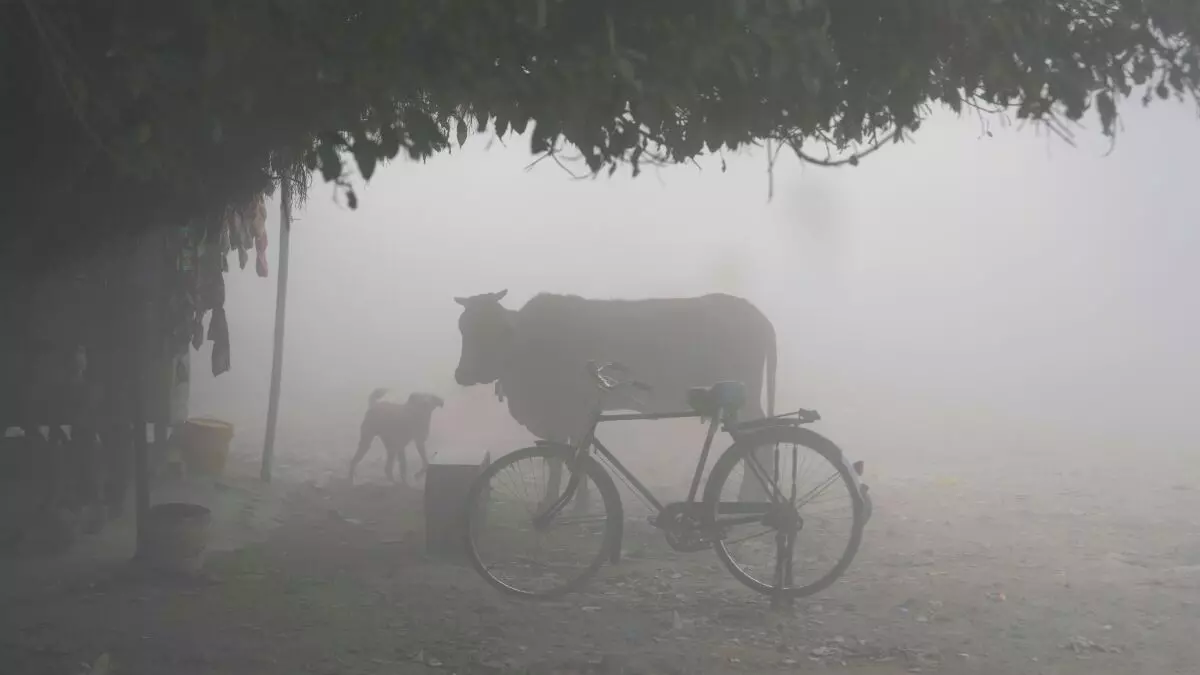Cold Wave Sweeps Across India: Mercury Plummets from North to South
India faces a severe cold wave as temperatures plunge across regions, from the freezing North to the chilly South. Learn about the weather impact, safety advisories, and how citizens are coping with this nationwide winter chill.
Cold Wave Sweeps Across India: Mercury Plummets from North to South

India is in the grip of an intense cold wave, with temperatures dropping significantly across the country. From the Himalayan foothills to the southern plains, the chilling weather has disrupted daily life, marking one of the coldest spells in recent years.
Extreme Cold in the Northern Regions
The northern states, as always, bear the brunt of the cold wave. In Jammu and Kashmir, temperatures have dipped to sub-zero levels, with popular tourist destinations like Srinagar recording temperatures as low as -6°C. The iconic Dal Lake has started freezing, creating a breathtaking winter spectacle but also challenging residents.
In Punjab, Haryana, and Delhi, icy winds from the Himalayas have brought nighttime temperatures to single digits, with Delhi's Safdarjung observatory reporting a low of 3°C. This drop has resulted in foggy mornings, reduced visibility, and disruptions to road, rail, and air travel. Schools have postponed morning classes, and the demand for space heaters and warm clothing has surged.
Chill Extends to Central and Western India
Central and western parts of the country, including Rajasthan, Madhya Pradesh, and Gujarat, are also experiencing unusually cold conditions. Mount Abu, Rajasthan's only hill station, recorded temperatures as low as -1°C, causing frost to form in the region. Cities like Jaipur and Ahmedabad reported minimum temperatures around 5°C, which is well below the seasonal average.
In Maharashtra, Mumbai's normally balmy weather has been replaced by cooler evenings and nights, with minimum temperatures dropping to 13°C, a rarity for the coastal city.
Southern States Feel the Chill
Interestingly, the cold wave has not spared the southern states either. Hyderabad and Bengaluru, typically known for their mild winters, have recorded night temperatures as low as 10°C. Tamil Nadu's hill stations, including Ooty and Kodaikanal, have reported frosty conditions, making them a hub for tourists seeking a winter experience.
Kerala, while still warmer than most parts of India, has seen a drop in temperatures, especially in its hilly districts like Wayanad and Munnar, where the mercury has dipped to near 5°C.
Impact on Daily Life
The cold wave has disrupted daily life across the country. Farmers in northern India are particularly affected, as the freezing temperatures pose a threat to standing crops like wheat and mustard. Frost conditions in some regions have also raised concerns about the quality and yield of vegetables and fruits.
Hospitals and clinics are witnessing a rise in cases of cold-related illnesses, including respiratory issues, hypothermia, and seasonal flu. Health authorities are advising citizens to take preventive measures, such as wearing warm clothing, avoiding early morning outdoor activities, and consuming hot beverages.
In cities, homeless shelters are operating at full capacity, with local authorities providing additional blankets and heaters to help vulnerable populations survive the freezing nights. The demand for warm clothing, room heaters, and even traditional coal-fired heaters (angithis) has surged in markets.
Weather Experts Explain the Phenomenon
Meteorologists explain that the cold wave is a result of a combination of western disturbances in the Himalayas and strong cold winds sweeping southward from the northern regions. Clear skies across most parts of India have exacerbated nocturnal cooling, making the nights particularly chilly.
The Indian Meteorological Department (IMD) has issued advisories for several states, warning of continued low temperatures and dense fog in the coming days. Travelers have been urged to exercise caution, especially in fog-prone areas, to avoid accidents.
Tourism in Full Swing Despite the Chill
While the cold wave has disrupted life for many, it has also boosted tourism in several areas. Hill stations like Shimla, Manali, and Gulmarg are witnessing a surge in visitors eager to experience snow. In Rajasthan, the chilly weather is drawing tourists to forts and deserts, adding a unique charm to the region’s winter landscape.
Even southern hill stations like Coorg and Munnar are attracting travelers who want to enjoy the crisp winter air and mist-covered landscapes. However, authorities are reminding tourists to dress warmly and take precautions against sudden temperature drops, especially in high-altitude regions.
Outlook for the Coming Days
Meteorologists predict that the cold wave will persist for at least another week, with no immediate signs of significant warming. As the nation braces for an extended spell of chilly weather, citizens are being urged to stay informed through weather updates and take necessary precautions to stay safe and warm.
India’s winter has always been a season of contrasts, but this year’s cold wave has brought a rare unity in chill, from the snowy peaks of the north to the southern coastal plains.

